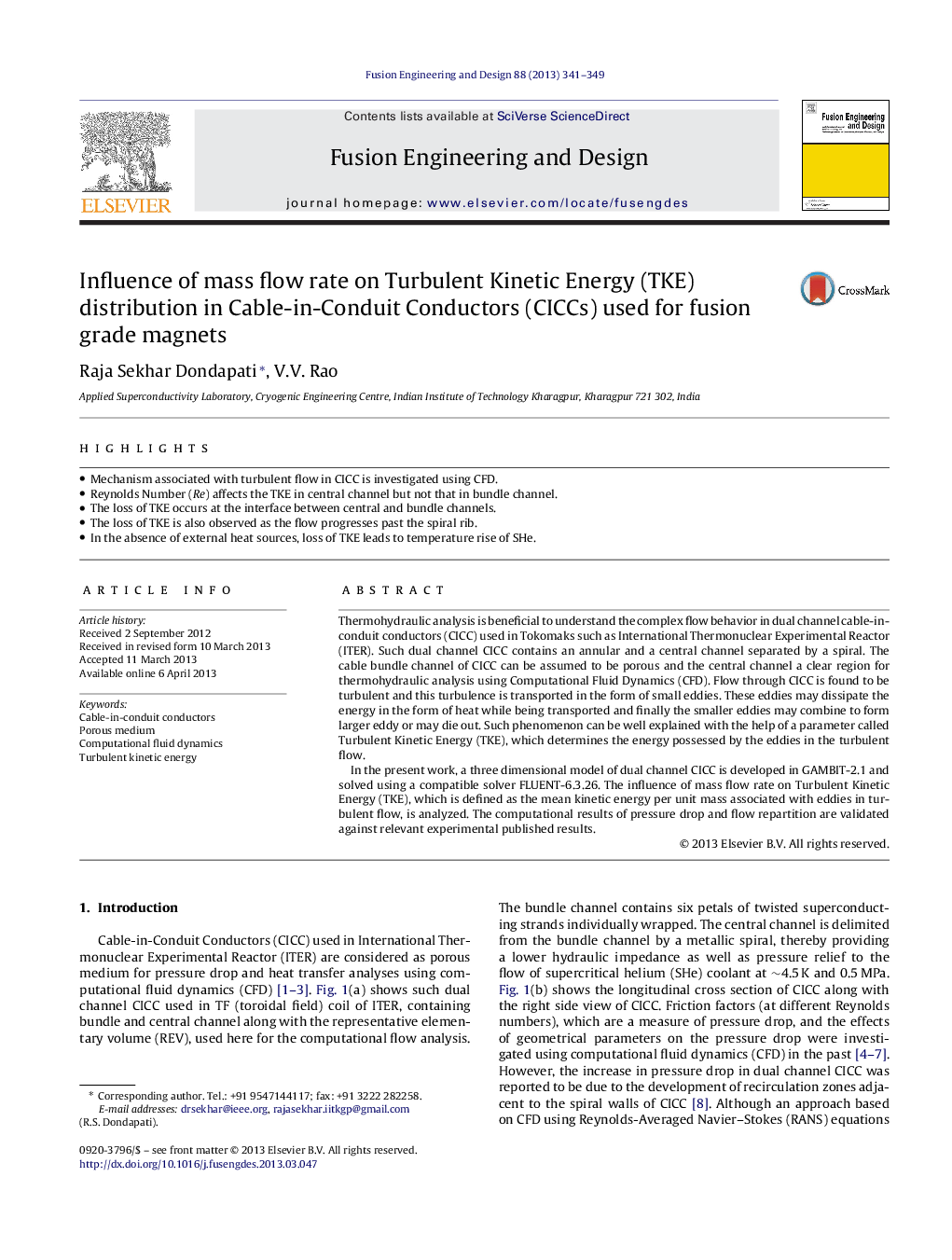| Article ID | Journal | Published Year | Pages | File Type |
|---|---|---|---|---|
| 271598 | Fusion Engineering and Design | 2013 | 9 Pages |
•Mechanism associated with turbulent flow in CICC is investigated using CFD.•Reynolds Number (Re) affects the TKE in central channel but not that in bundle channel.•The loss of TKE occurs at the interface between central and bundle channels.•The loss of TKE is also observed as the flow progresses past the spiral rib.•In the absence of external heat sources, loss of TKE leads to temperature rise of SHe.
Thermohydraulic analysis is beneficial to understand the complex flow behavior in dual channel cable-in-conduit conductors (CICC) used in Tokomaks such as International Thermonuclear Experimental Reactor (ITER). Such dual channel CICC contains an annular and a central channel separated by a spiral. The cable bundle channel of CICC can be assumed to be porous and the central channel a clear region for thermohydraulic analysis using Computational Fluid Dynamics (CFD). Flow through CICC is found to be turbulent and this turbulence is transported in the form of small eddies. These eddies may dissipate the energy in the form of heat while being transported and finally the smaller eddies may combine to form larger eddy or may die out. Such phenomenon can be well explained with the help of a parameter called Turbulent Kinetic Energy (TKE), which determines the energy possessed by the eddies in the turbulent flow.In the present work, a three dimensional model of dual channel CICC is developed in GAMBIT-2.1 and solved using a compatible solver FLUENT-6.3.26. The influence of mass flow rate on Turbulent Kinetic Energy (TKE), which is defined as the mean kinetic energy per unit mass associated with eddies in turbulent flow, is analyzed. The computational results of pressure drop and flow repartition are validated against relevant experimental published results.
